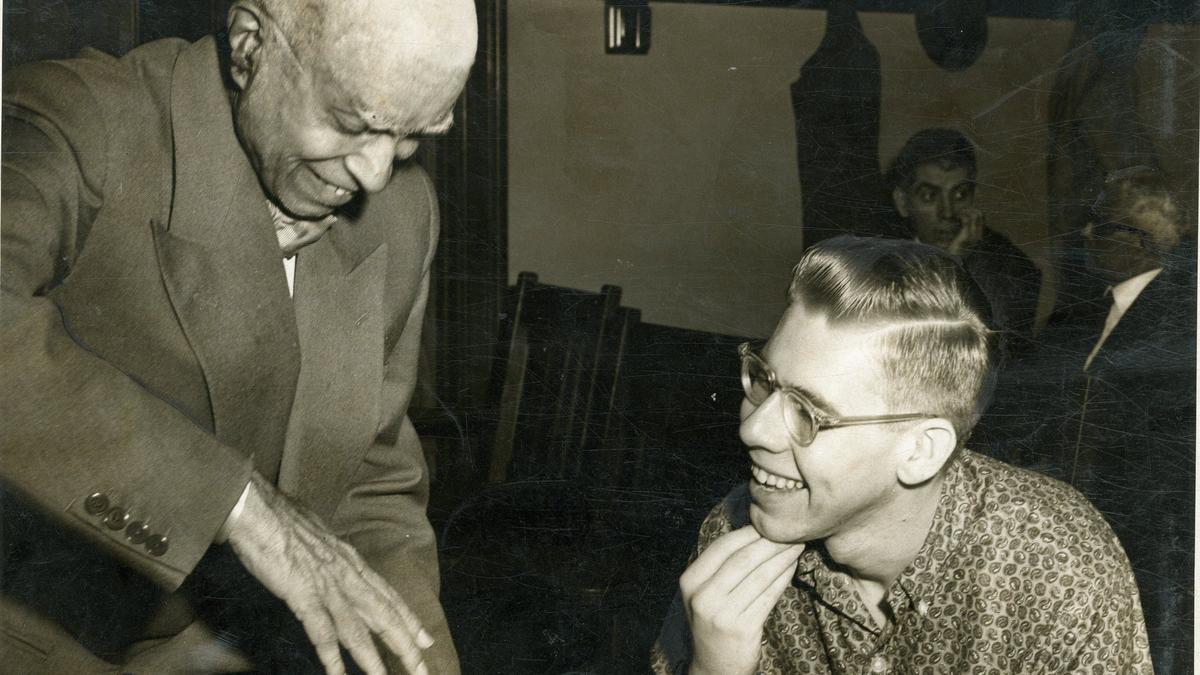
Nilakanta Sastri’s take on Dravidian-Aryan divide and the claims on the Indus Valley Civilisation
The Hindu
Historian K.A. Nilakanta Sastri discusses the Dravidian-Aryan division in India, emphasizing cultural contacts and historical misconceptions.
At a time when the debate on the Dravidian-Aryan division dominates the political narrative in India, particularly in Tamil Nadu, historian K.A. Nilakanta Sastri observed that the Dravidians as well as Aryans came to India not all at one time, but in a series of waves separated by varying intervals of time.
Sastri, the author of The Cholas and A History of South India, in his lectures at Patna University in 1964, quoted J. Burrow, Professor of Oxford University, who had suggested that “Vedic speech was influenced not by the Dravidian languages of history as we know them, but by an earlier form, a sort of proto-Dravidian, which has long preceded them as well as Aryan advent into India”. This suggestion, according to Sastri, postulated that the Dravidian speech of some kind — primitive or proto, as we describe it — at some remote past prevailed all over India, including the northwest, and this general belief in the widespread of the Dravidian in India was held by many scholars still.
This argument, however, is repudiated by Fürer-Haimendorf and others. According to them, the Dravidians were at no time spread over a wider area than in historical times and the mutations of Vedic speech and grammar were better explained by contacts with Austro-Asiatic speeches than with the Dravidian.
Talking about culture contacts, Sastri said a proper comprehension of these relations was fundamental to a fruitful understanding of the story of Indian civilisation. He had delivered four lectures: Cultural Contacts, The Aryan Problem, The Aryanisation of India, and Social and Religious Synthesis of India. It was published as a book with a preface by historian R.S. Sharma, who was working at the Department of History, University of Patna.
Sastri said it was well known that in all countries of the world, a certain polarity developed between the north and the south owing to differences in the physical and climatic conditions between widely separated latitudes of the earth. “In India, this polarity has been accentuated by differences in language and culture which have persisted through ages and by some modern assumptions and identification of an unfounded character. Notable among such facile assumptions are the ideas that North of India is Aryan, Brahmin and Sanskrit, while South is Dravidian, non-Brahmin and Tamil (Dravidian),” he had said.
But he had made it clear that the use of Aryan and Dravidian as racial terms is unknown to scientific students of anthropology. To support his argument, he drew on Max Müller. “When Max Müller found that his earlier writing on Indo-European philology had been misunderstood and people began to talk as if the Aryan race existed, he took great care to deprecate the inference of race from language and said that the Aryan race had no more real existence than a brachycephalic language,” he said.
Making a reference to the Dravidar Kazhagam (DK) and the Dravida Munnetra Kazhagam (DMK) and their aims and activities in the political and social life, Sastri cited Julian Huxley’s argument that “in the practical handling of every so-called social problem, the error seems invariably to have been made of confusing genetic with cultural factors”.











